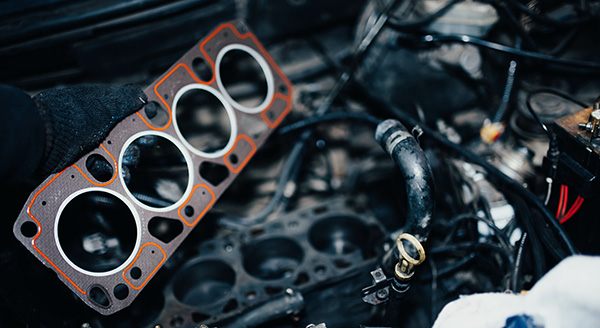
A blown head gasket – the mere mention of it sends shivers down the spine of many car owners. It's one of those dreaded issues that can make even experienced drivers worry about the fate of their beloved vehicle. But the big question is - Is a blown head gasket repairable?
The Role of the Head Gasket
The head gasket is a needed component located between the engine block and the cylinder head. It seals the internal combustion process and prevents coolant and oil from mixing. It ensures your engine runs smoothly and efficiently by maintaining proper compression and preventing leaks.
Symptoms of a Blown Head Gasket
How do you know if your head gasket is blown? Several telltale signs indicate this problem. Recognizing these symptoms early can help prevent further damage to your engine:
- Overheating: One of the most common signs is engine overheating. A blown head gasket can cause the engine to overheat due to coolant loss.
- White Smoke from the Exhaust: If you notice white smoke billowing from your exhaust, it could be a sign that coolant is leaking into the combustion chamber.
- Contaminated Oil: Check your oil dipstick. If the oil appears milky or frothy, it might indicate that the coolant is mixing with the oil.
- Loss of Power: A blown head gasket can lead to a significant loss of engine power, making your car feel sluggish.
- Bubbling in the Radiator: If you see bubbling or air pockets in the radiator or coolant overflow tank, it could be a sign of a head gasket issue.
Is Repairing a Blown Head Gasket Possible?
The short answer is yes, a blown head gasket is repairable. However, the complexity and cost of the repair can vary greatly depending on the extent of the damage and the make and model of your vehicle.
Factors Affecting Repair
Extent of Damage
If the damage is limited to the head gasket itself, the repair process is relatively straightforward. However, if the engine block or cylinder head is warped or cracked, the repair becomes more complex and costly.
Engine Type
Some engines are easier to work on than others. For instance, a simple four-cylinder engine will typically be less expensive to repair compared to a complex V6 or V8 engine.
Labor Costs
The labor involved in replacing a head gasket is substantial. Mechanics need to disassemble a significant portion of the engine to access the gasket, which can result in high labor costs.
Repair Options
Head Gasket Replacement
This is the most common and reliable method. It involves removing the cylinder head, cleaning the surfaces, and installing a new head gasket. This process also includes checking for additional damage and addressing any issues found.
Engine Block Sealants
For minor leaks, some car owners opt for engine block sealants. These products can temporarily seal small leaks in the head gasket, but they are not a permanent fix and are generally not recommended for long-term use.
Rebuilding the Engine
In severe cases where the damage extends beyond the head gasket, a full engine rebuild might be necessary. This involves replacing or machining parts of the engine to restore it to working order.
Preventing Future Head Gasket Issues
Prevention is always better than cure. Regular maintenance can help prevent head gasket failures. Here are some tips:
Regular Coolant Checks
Ensure your vehicle has the correct coolant levels and that the coolant is in good condition. Old or contaminated coolant can contribute to head gasket failure.
Temperature Monitoring
Keep an eye on your engine's temperature gauge. If your car starts to overheat, address the issue immediately to prevent further damage.
Routine Inspections
Regularly inspect your engine for signs of leaks, unusual noises, or performance issues. Early detection can save you from major repairs down the line.
Are you concerned about a potential head gasket problem? Bring your vehicle to Premier Automotive Service for a comprehensive inspection and peace of mind.